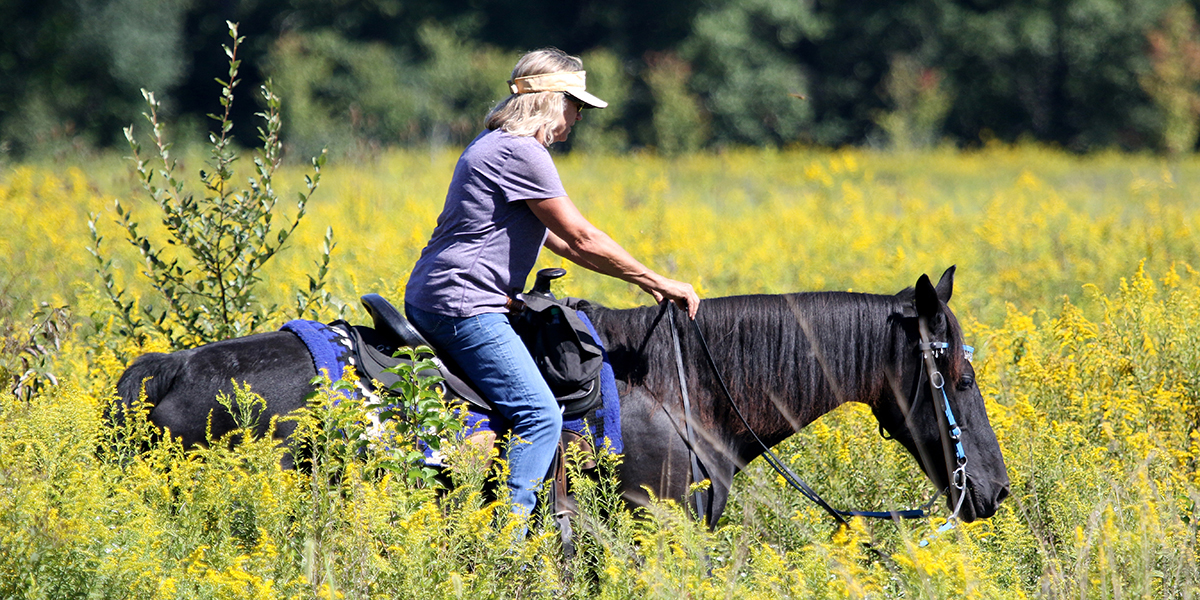ELAINE HALL
Assistant Resource Manager
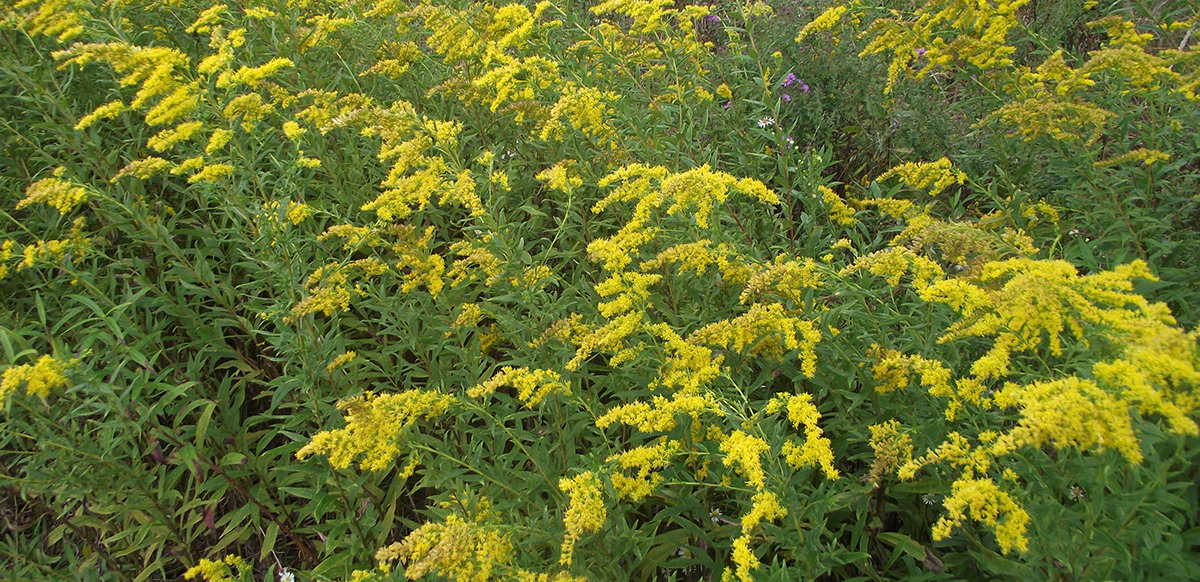
Around this time every year, while growing up, the blooming seas of golden yellows always meant it was time to go back to school. Goldenrods (genus solidago) are a very diverse group of plants with 25 native species occurring in Ohio. Some you’ll find in woodlands and wetlands, while other, more familiar varieties, grow in open, dry habitats like old fields and prairies.
Across the park district we celebrated these autumnal cornerstone plants and their abilities to feed pollinators. Our most common fall bloomers are tall goldenrod (Solidago altissima) and Canada goldenrod (Solidago canadensis). A single plant of these species can produce an average of 3,070 seeds per plant! That’s a lot of flowers to collect nectar and pollen from.
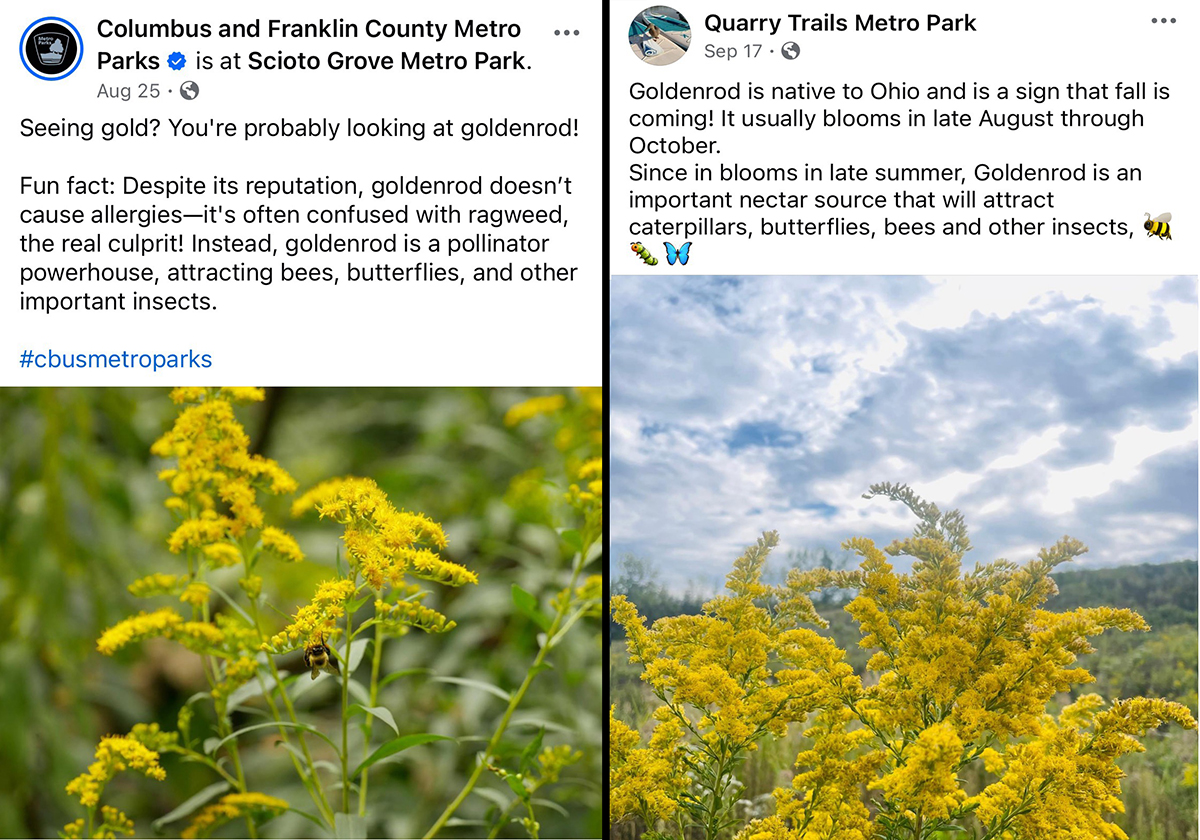
However, due to the immense fecundity of these species through seed and rhizome, Metro Parks Resource Management actually has to manage them to create room for the rest of the open field dwelling plants and ensure biotic diversity. We need an array of plants that bloom in spring, summer and fall and have different flower types to feed a variety of pollinators.
Having a field full of just goldenrod that only blooms in fall would create a monoculture. By mowing patches of goldenrod just before or during bloom this helps keep them at bay while allowing room for other plants that have already gone to seed earlier in the season. The mower also helps disperse these seeds and creates open ground to ensure that earlier plants get first spring light and warmth.
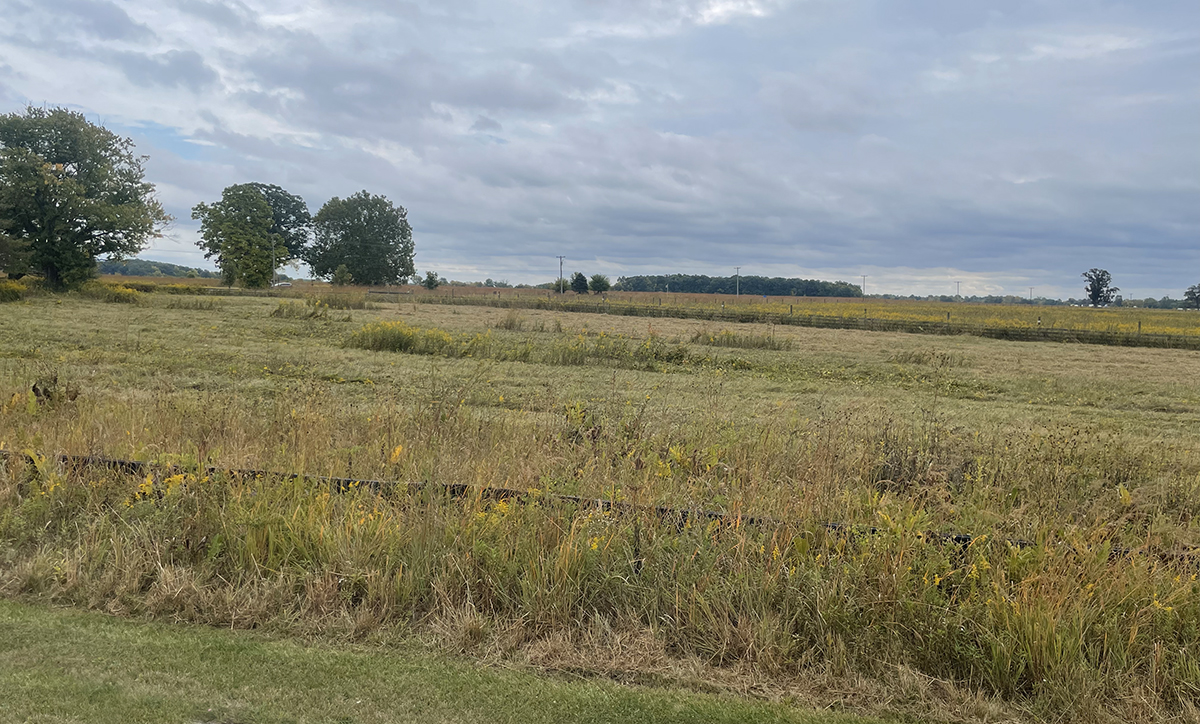
In addition to goldenrod, fall mowing allows us to target invasive species such as phragmites aka common reed (Phragmites australis), Chinese lespedeza (Lespedeza cuneata), purple loosestrife (Lythrum salicaria), and narrow leaved cattail (Typha angustifolia) which all have a similar bloom and seeding time as goldenrod.
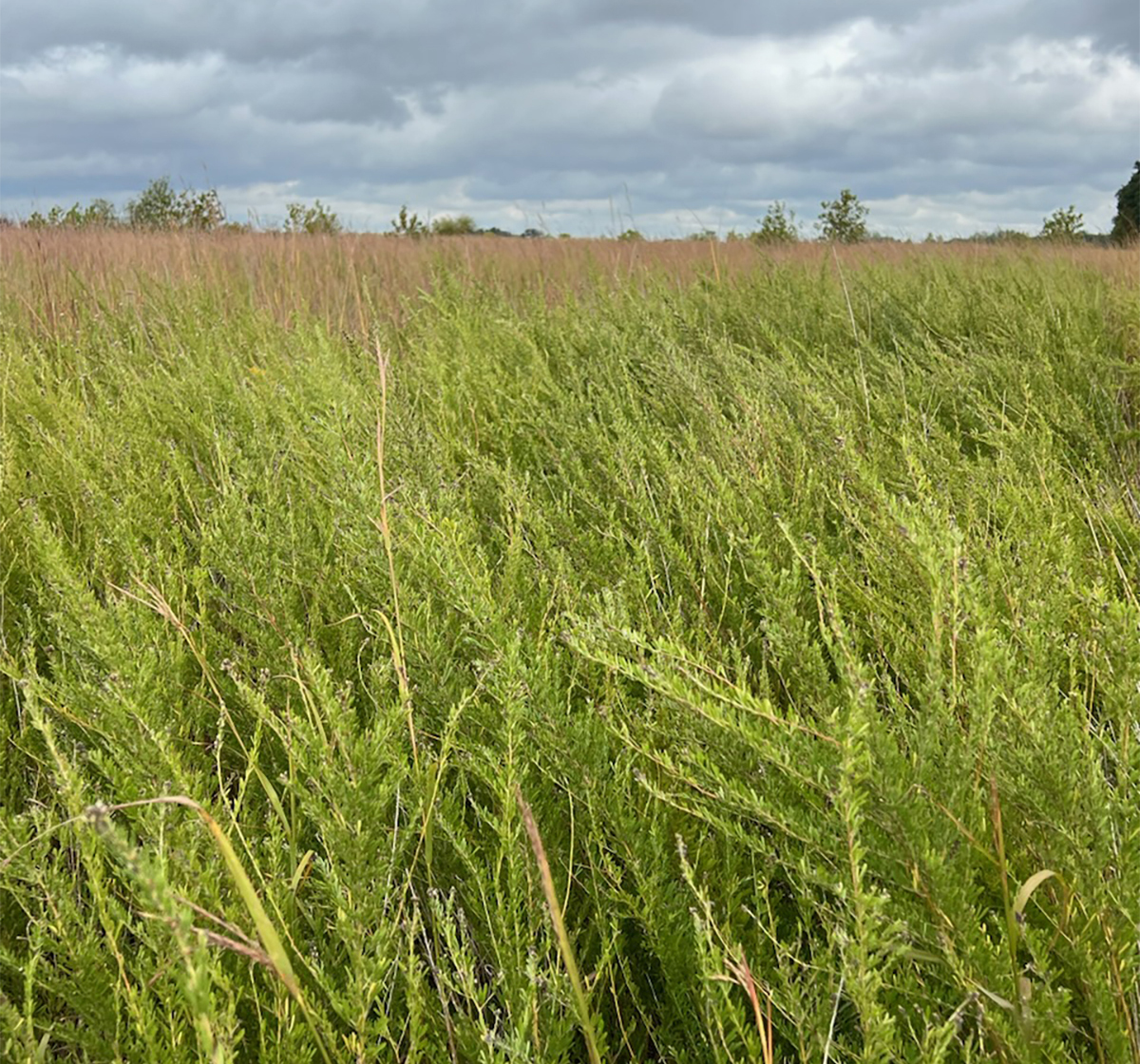
Ohio actually has a deep-rooted history when it comes to goldenrods. While attending Marietta College in 1832, botanist John L Riddell traveled across the state making collections of Ohio’s native flora. While studying our wet prairies, Riddell discovered a species of goldenrod previously unknown to science that he named Ohio goldenrod (Solidago ohioensis). Another Ohio native goldenrod, Riddell’s goldenrod (Solidago riddellii), would be named after Riddell and his contributions to Ohio’s flora.
Other goldenrods are more infrequent and occur in specific habitats like the slender wood dwelling blue-stemmed goldenrod (Solidago caesia), rough-leaved goldenrod (Solidago patula) in swamps and wetlands, and stiff goldenrod (Solidago rigida) and the state threatened showy goldenrod (Solidago speciosa) in our restored prairies.
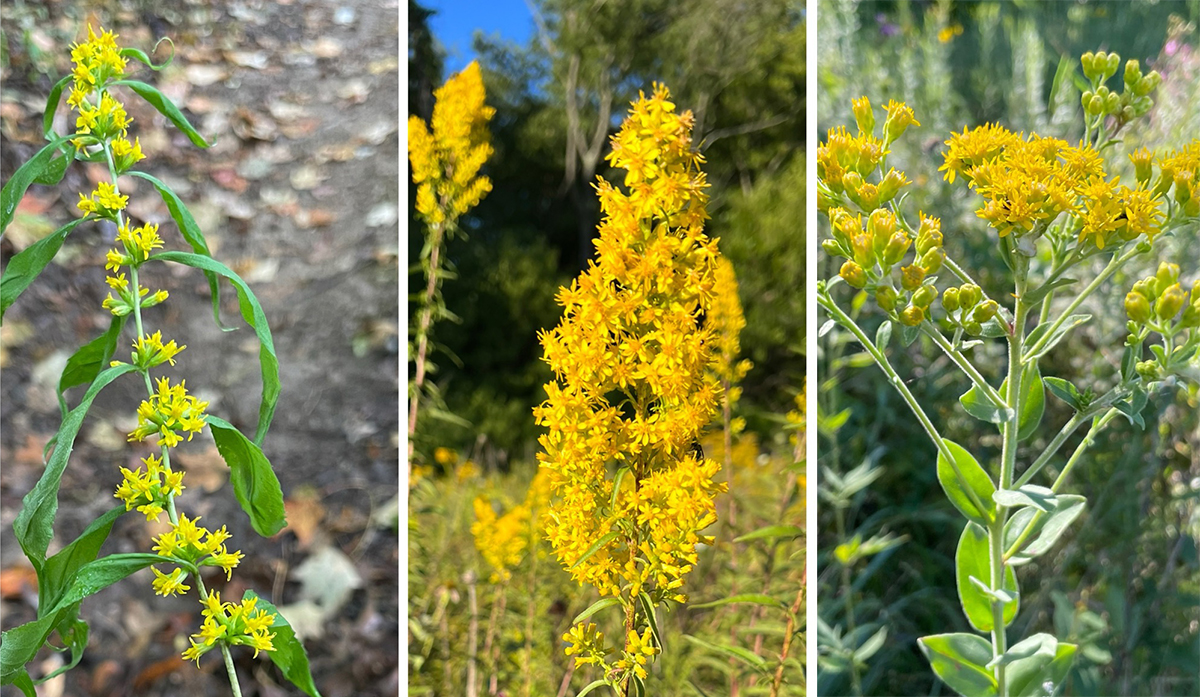
Due to their attractiveness to pollinators and humans alike, goldenrods can make an excellent addition to your wildflower gardens and landscaping. By utilizing these native plants, you’re helping countless creatures with a food source before winter arrives. It’s best to use non-aggressive species, as the weedier ones can become problematic and overtake a flowerbed. Below is a helpful checklist to Ohio’s 25 species of goldenrod.
• Solidago altissima – Tall goldenrod
• Solidago arguta – Cut-leaved goldenrod (extirpated)
• Solidago bicolor – Silverrod, White goldenrod
• Solidago caesia – Blue-stemmed goldenrod
• Solidago canadensis – Canada goldenrod
• Solidago erecta – Slender goldenrod
• Solidago flexicaulis – Zigzag goldenrod
• Solidago gigantea – Giant goldenrod
• Solidago hispida – Hairy goldenrod
• Solidago juncea – Early goldenrod
• Solidago nemoralis – Gray goldenrod
• Solidago odora – Sweet goldenrod (threatened)
• Solidago ohioensis – Ohio goldenrod
• Solidago patula – Rough-leaved goldenrod
• Solidago ptarmicoides – White upland goldenrod (extirpated)
• Solidago puberula – Dusty goldenrod (endangered)
• Solidago riddellii – Riddell’s goldenrod
• Solidago rigida – Stiff goldenrod
• Solidago rigidiuscula – Slender showy goldenrod (endangered)
• Solidago rugosa – Wrinkle-leaved goldenrod
• Solidago speciosa – Showy goldenrod (threatened)
• Solidago sphacelata – False goldenrod
• Solidago squarrosa – Leafy goldenrod (threatened)
• Solidago uliginosa – Bog goldenrod
• Solidago ulmifolia – Elm-leaved goldenrod
